Lithium Battery Maker SimpliPhi Power Is Growing Fast
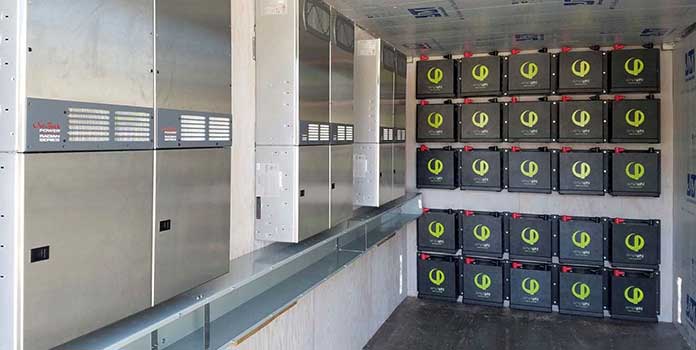
SimpliPhi is big news in the energy storage industry these days.
They’re growing like mad. Their batteries see incredible longevity – and for a decent price. And they’re made right here in the US. What sets this company and their products apart?
Let’s take a look at their current offerings, and see how their inverter-storage offering compares to the most well-known residential battery system, the Tesla Powerwall.
Who is SimpliPhi?
SimpliPhi is a lithium-ion battery manufacturer founded in California in 2002 and who still makes all their batteries right in California. Originally focused on off-grid applications in the entertainment industry, they’ve shifted with the times and now incorporate storage options for grid-connected homes and businesses as well as off-grid solutions.
Their strategy is apparently paying off, as the company is growing like mad. In a May 2018 interview, the SimpliPhi CEO mentioned they’d sold 3x more product in 2017 than the previous year, leaving them scrambling for more manufacturing space.
They haven’t forgotten their original focus however, and it’s clearly evident in their product line, which includes “The Big Genny”, an ultra-portable storage system designed for military and humanitarian work, and that looks like a big sturdy suitcase.
As you can imagine, with SimpliPhi’s batteries designed for a wide variety of applications, they offer many different storage sizes and functionalities. They’ve even partnered with two inverter manufacturers to produce inverter-storage combos similar to the Tesla Powerwall.
SimpliPhi Power Options
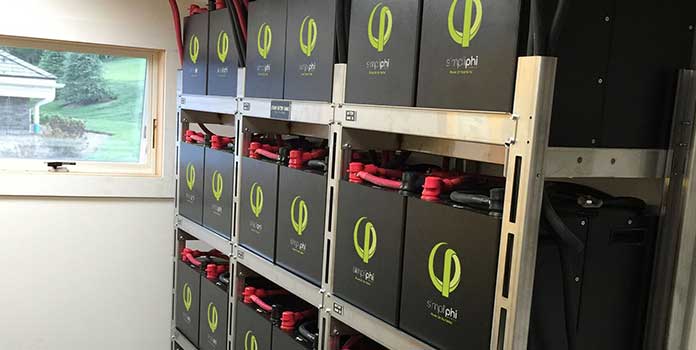
SimpliPhi manufactures lithium-ferro-phosphate (LFP, also known as lithium-iron-phosphate or LiFePO4) batteries, a non-toxic type of lithium-ion battery that enjoys long-term stability and performance.
As you probably already know, lithium batteries have a long list of benefits over traditional lead-acid batteries: they last longer, you can discharge the batteries more deeply, they require no maintenance, and are lighter and therefore easier to handle.
With these benefits though, lithium batteries also cost quite a bit more upfront as well. But with their long battery life, lithium batteries are oftentimes as cost-effective, or even more cost-effective, than cheaper lead-acid batteries over the long run.
Simpliphi batteries obviously enjoy all the benefits of lithium technology (low weight, little maintenance), but with an estimated life cycle of 10,000 cycles @ 80% discharge (meaning you can drain the battery 80% over 10,000 times before it dies), SimpliPhi’s batteries also enjoy the longest life we’ve seen yet for any lithium-based battery (really any battery, for that matter).
Like most lithium-ion batteries, SimpliPhi’s batteries include an internal battery management system (BMS) and the manufacturer claims to have a proprietary cell architecture that presumably increases efficiency, though they don’t exactly specify what the benefits are.
SimpliPhi’s batteries are designed for energy storage for both grid-connected and off-grid homes, either as backup power or shifting energy use to avoid high-cost peak power. Let’s look a bit more deeply at their specific offerings now.
Core Power: Basic Energy Storage
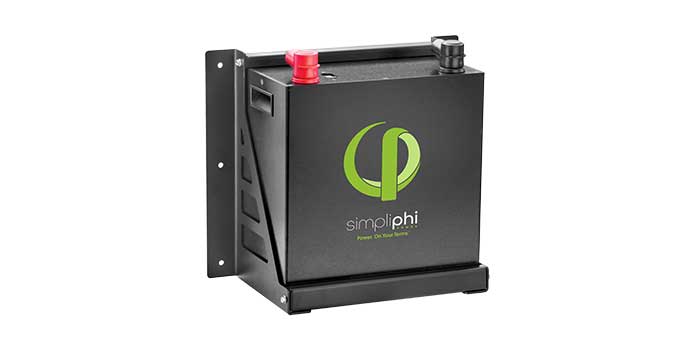
Via their Core Power series, SimpliPhi offers batteries ranging from 0.65 kWh to 3.5 kWh, as well as a low profile 2.6 kWh option that can be stacked for space saving. You’re probably thinking that 3.5 kWh isn’t that big, but these batteries are modular and designed to connect together.
The 0.65kW and 1.3kW options come in 12 volts or 24 volts, but above that it’s only 24 or 48 volts. SimpliPhi notes that their batteries are not designed to be connected in series, so the batteries’ nameplate voltage must match your designated system voltage (ie, if you want a 48 volt system, you must buy batteries that are already 48 volts). However, you can connect in parallel to increase amperage (ie connecting 2 1.3kW batteries to make a 2.6kW system).
You can purchase SimpliPhi Core Power batteries yourself through installers or online retailers, where you can find them for around $1,000/kWh. At the time of publication, for example, you can find the SimpliPhi 3.5 for $3,425 and the 2.7 kWh for $2,700 on WholesaleSolar.
With SimpliPhi batteries’ 10,000 cycles at 80% Depth of Discharge (DoD, which is how much you can regularly deplete the battery, ie down to 80% of its full capacity), you’re looking at about $0.12 per kWh over its entire lifetime – a great deal compared to other batteries out there.
And if you live in an area with high electricity rates like Hawaii or California, that probably sounds pretty cheap too. Of course, this price doesn’t include additional hardware (mounting equipment, inverter, etc), installation, or your energy source (you’ve got to charge the battery as well, remember?)
Like any battery, if you want to use it with AC appliances (which all of us almost exclusively use, unless you live in an RV or boat), you’ll need an inverter to convert the DC electricity stored in the batteries to AC. Why wouldn’t you just buy an inverter-battery combo like the Tesla Powerwall or SimpliPhi’s AccESS (more info below)? The answer is scalability.
Keeping the storage and inverter separate allows you to scale your batteries to the size you need, then buy a single inverter. With an inverter-battery combo, you lack that modular design.
The Core batteries are well suited for off-grid applications or grid-connected homeowners who want to design the perfect storage system to suit their needs – though not necessarily the simplest or easiest.
If you have high electricity needs, the max output of the Core Power batteries is limited to 60 amps, so if you need more capacity, you’ll have to step up to SimpliPhi’s Peak Power series.
Peak Power: High Capacity Output
SimpliPhi’s Peak Power batteries come in sizes very similar to the Core Power batteries above – namely 1.2 kWh, 2.4 kWh, and 3.2 kWh. However, with a max output capacity of 160 amps, they’re able to provide almost 3x more instantaneous power than the other batteries above. They are LFP batteries and come with a BMS just like the Core Power batteries.
SimpliPhi’s high output batteries are a tad pricier than the basic batteries above, hovering around $1,300 to $2,000 per kWh of capacity. Northern Arizona Wind & Sun, an approved SimpliPhi dealer, for example, sells the 3.2 kWh High Output battery for $4,385 and the smaller 1.3 kWh version for $2,835 (as of September 2018).
Accounting for cycle life and DoD, that equates to $0.17 per lifetime kWh – about 40% more expensive than the Core Series 3.5kWh battery we looked at above.
These high output batteries are special use, designed for those who have more demanding energy needs.
AccESS: Battery-Inverter Combo
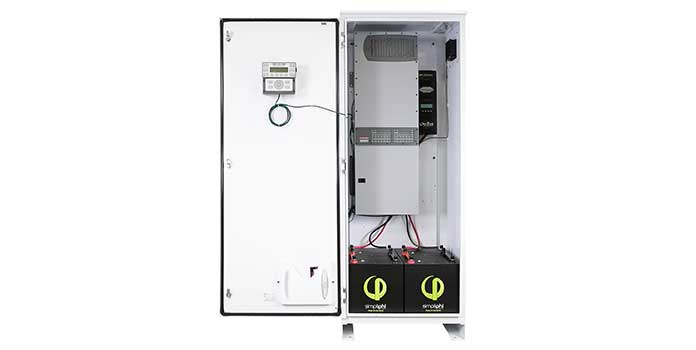
The inside of the AccESS, with inverter and batteries visible.
If you’re looking for the simplicity of a battery-inverter combo like the Tesla Powerwall, SimpliPhi’s got you covered there too. They’ve partnered with two different well-respected inverter manufacturers – Outback and Schneider – to create the AccESS, a fully-integrated energy storage system.
These storage systems are designed for both grid-connected and off-grid use and the largest option, at 14kWh, is sized similarly to the Powerwall and can store enough energy for about half the average home’s daily usage.
While the larger options are big enough to use as emergency back-up power, the smaller 7kWh version – while able to be used for backup electricity – is really best suited for shifting energy use to different times of the day or peak shaving for grid-connected homeowners and businesses.
While Outback and Schneider manufacture the inverters, SimpliPhi uses their 48v 3.5 kWh batteries that we looked at above for the storage, from 2 to 4 depending on the system size.
Solar equipment retailer Civic Solar sells the 14kWh Outback AccESS for just under $22,571 at the time of writing. That equates to $1,612 per kWh of capacity – a great deal when compared to the battery-only option above, especially when you consider you also get a giant weather-resistant enclosure and an inverter from a well-respected manufacturer.
The AccESS is assuredly SimpliPhi’s answer to the Tesla Powerwall – an all-inclusive, sleek, and easy to use energy storage system. No need to buy your batteries and inverter separately. Just buy it all at once and forget it. But how does it stack up against the Powerwall? Let’s find out.
SimpliPhi AccEss vs Tesla Powerwall
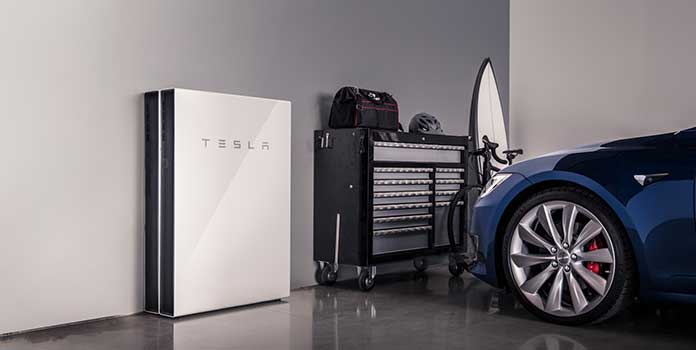
Like the Tesla Powerwall, the AccESS is a large piece of equipment, though much heavier at around 700 pounds. Unlike the Powerwall, the device is freestanding, but like the Tesla it can be placed inside or outdoors. With a roundtrip efficiency of 98%, it’s 8% more efficient than the Tesla Powerwall – a huge improvement over the Tesla which lets you waste less electricity and see a faster return on your investment.
As we already mentioned, the AccESS’ storage capacity ranges from a small of 7 kWh to 14 kWh – compared to the Powerwall’s single size of 13.2 kWh storage capacity.
When we calculate the AccESS’ lifetime cost per kWh (including its long Cycle Life and high DoD), we’re looking at a cost of $0.21 per lifetime kWh ($22,571 / (14 kWh * 80% * 10,000 cycles * 98% efficiency) = $0.21/kWh).
This is certainly at a competing level with grid-sourced electricity, but don’t forget the other costs involved, namely additional equipment costs, installation and the cost of the electricity you’ll actually store – either via your solar installation or utility-sourced electricity during periods of low demand (in the middle of the night, usually).
Tesla sells the Powerwall for $5,900, but unfortunately don’t publicize the Powerwall’s cycle life, opting instead to simply state that they warranty the product for 10 years regardless of cycles. (SimpliPhi also warranties their product for 10 years, or 10,000 cycles – whichever comes first.)
For comparison’s sake, let’s say you cycle your Powerwall 1x/day for the full 10 years. That’s 3,650 cycles before the warranty runs out. At 80% DoD and the Powerwall’s going rate of $5,900, that’s a life cycle cost of $0.17 per kWh – about 20% cheaper than the AccESS ($5,900 / (13.5kWh * 80% * 3,650 cycles * 90% efficiency) = $0.17/kWh).
Of course, these prices aren’t coming directly from SimpliPhi themselves, but rather a partnering 3rd party seller. Installing your own system, you might find better prices shopping around a bit first.
Are SimpliPhi Batteries Cost-Effective?
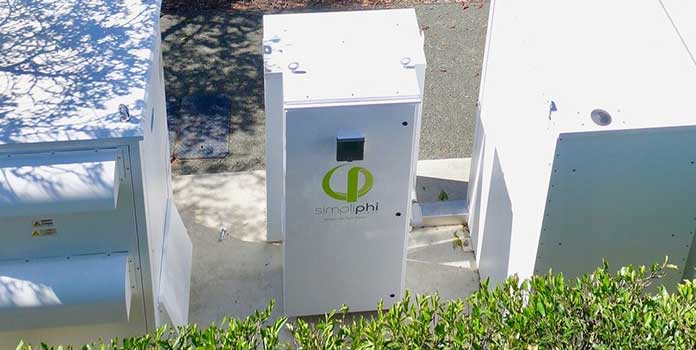
So here’s the real question, do the SimpliPhi batteries make financial sense?
First off, SimpliPhi has an eye to the off-grid market and, in these situations, questions about cost-effectiveness go out the window and are replaced by ‘Do I want electricity or not?’ as there’s typically no other option.
If you’re connected to the grid though, you need to thoroughly weigh the cost-effectiveness of installing battery storage before moving forward. You don’t want to install batteries that take 30 years to pay themselves off! With SimpliPhi selling 3x more batteries in 2017 than 2016, they’ve certainly found a market, with homeowners and businesses finding the storage systems worthwhile.
However, energy storage is still much more expensive than utility electricity in most of the country – the average electricity price in the US is just $0.13 per kWh after all. The SimpliPhi batteries – like all energy storage batteries right now – really only make sense if you have extremely high electricity rates (like in Hawaii, California, or the northeast) and are on a time-of-use rate (or something similar) and you can save money by avoiding peak pricing.
With electricity prices rising every year, and batteries prices falling, batteries – like solar installations – will eventually meet grid parity, that magic number where the high initial cost of energy storage actually makes more financial sense than continuing to purchase from the utility year after year.
Solar energy is already there, despite what naysayers probably said 20 years ago. It’s just a matter of time for energy storage to reach that tipping point as well. Until that point where it makes sense for everyone, the cost-effectiveness of installing batteries with your solar installation is on a case-by-case basis. Talk to a few installers to see cost and savings estimates and go from there.
And if you’re in an area where batteries make sense, Simpliphi makes some of the best products currently on the market.
Image Credits Public Domain via Flickr – 1, 2, 6, Courtesy SimpliPhi – 3, 4, and Courtesy Tesla Press Kit – 5
